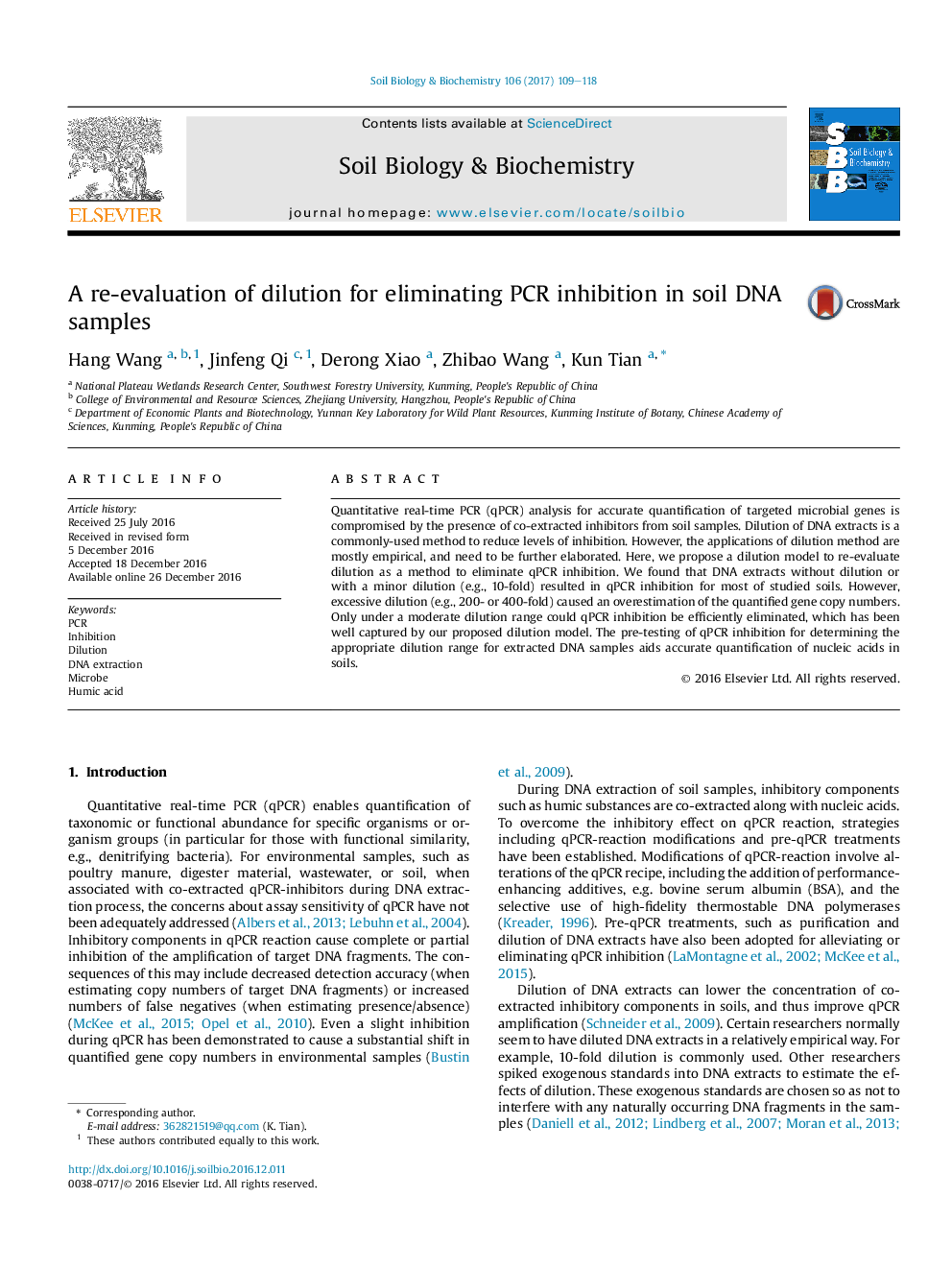| Article ID | Journal | Published Year | Pages | File Type |
|---|---|---|---|---|
| 5516575 | Soil Biology and Biochemistry | 2017 | 10 Pages |
â¢When a DNA sample is diluted, inhibitory substances and target genes are co-diluted.â¢Insufficient dilution causes underestimation of gene copy numbers.â¢Excessive dilution causes overestimation of gene copy numbers.â¢Target genes with low copy numbers are more susceptible to inhibitors when diluted.â¢Inhibition test of soil DNA samples is essential for downstream analyses.
Quantitative real-time PCR (qPCR) analysis for accurate quantification of targeted microbial genes is compromised by the presence of co-extracted inhibitors from soil samples. Dilution of DNA extracts is a commonly-used method to reduce levels of inhibition. However, the applications of dilution method are mostly empirical, and need to be further elaborated. Here, we propose a dilution model to re-evaluate dilution as a method to eliminate qPCR inhibition. We found that DNA extracts without dilution or with a minor dilution (e.g., 10-fold) resulted in qPCR inhibition for most of studied soils. However, excessive dilution (e.g., 200- or 400-fold) caused an overestimation of the quantified gene copy numbers. Only under a moderate dilution range could qPCR inhibition be efficiently eliminated, which has been well captured by our proposed dilution model. The pre-testing of qPCR inhibition for determining the appropriate dilution range for extracted DNA samples aids accurate quantification of nucleic acids in soils.
